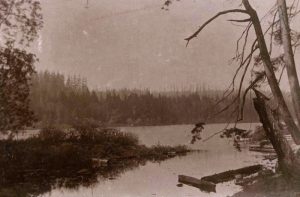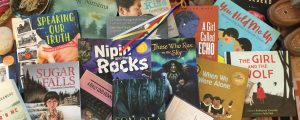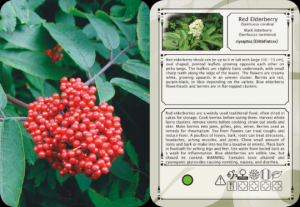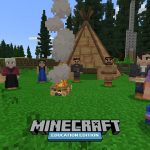These five First Nations youth are being highlighted for their action in restoring language and culture and ultimately hope in their communities. They are also an example to students of action: it is personal, it takes different forms, and it is in response to a personal connection. As the final project considers using technology to inspire activism in the classroom, all of these youth use technology for their purpose. Exploring who they are, their message, and their delivery offers students a rich experience of activism in action.
Author Archives: KatharineRader
M4P4: Burnaby Village Museum, a step toward reconciliation

Over the past few years, Burnaby Village Museum has taken steps to undo “the part it has played in erasing Indigenous history from the place we now call Burnaby (Vancouver is awesome, 2019). This is an important step toward reconciliation and an example that can be discussed in class.
Out of this process has come the Indigenous History in Burnaby Resource Guide. This guide is an excellent resource for grade 5 and beyond, providing local context and story to the areas in which my school is found and where the kids play and live. This guide also serves another purpose though, and that is to open up conversation about how history is written. Who funded this book? Who consulted in this book? Who received credit for this book?
Naylor, C. (2019, November 1). Burnaby museum works to undo erasure of local Indigenous history. Vancouver Is Awesome. https://www.vancouverisawesome.com/history/indigenous-history-burnaby-village-museum-1946638.
M4P3: The Transmountain Pipeline


One area of focus for my final project is exploring activism with my class, with this classroom learning module adapted as the final project. The proximity of our school to Burnaby Mountain offers an opportunity for rich discussion and personal connection regarding the TransMountain Pipeline. It also offers us a chance to explore some of the messaging that is available online, both through the site Coast Protectors and the Transmountain site. Both sites discussion environmental issues at play, but in very different ways. What information is provided and what information is missing? Helping students evaluate the messaging is an important piece of decolonizing technology use.
This CBC Kids news video is a good introduction to the topic, providing background on both sides.
M4P2: SFU Museum of Archeology and Ethnology
My focus for the final module has been on local sources that can enhance my students’ understanding of the area around them. Given my school’s proximity to Simon Fraser University (SFU), there are many resources that directly relate to this subject. SFU’s Museum of Archeology and Ethnology is primarily designed to be enjoyed in person. With COVID, however, the museum has shifted to creating online content for educators, the majority of which relates to First Nations culture (though not all). While the site offers many resources, of particular note is the Tse’K’wa history of project that raises some interesting discussion around archeology and who owns what.
M4P1: The Bill Reid Centre
The Bill Reid Centre is located at Simon Fraser University, a forty-minute hike from my school, but I did not realize its website was so rich in resources. It uses digital technologies such as photographs, drawings, videos, and other visual media to highlight the depth and vibrancy of Northwest Coast culture. Each section is so plentiful in resources that an entire year of curriculum could be developed with the website as a starting point. Its stated mandated is to (1) encourage community and academic conversations regarding the visual culture of Northwest Coast First Nations, and (2) promote public understanding and respect for the First Nations of the Northwest Coast past and present. The digital village project, in particular, could be of particular value in my class when using Minecraft to showcase knowledge.
M3P5: Books to Build On: Indigenous Literature for Learning

This University of Calgary website, in combination with Indigenous and non-Indigenous people, offers a curated list of Indigenous books suitable for all ages (from child to university student). As a bonus, they have also included lesson plans with most of the books. I considered my knowledge of Indigenous books suitable for my class to be well developed, and this resource offered new books to add. In particular, I like that it is not limited to social studies or language arts (where indigenous content is often included), but rather focuses on all the subject areas (including science, math, etc).
M3P4: Gladys We Never Knew

Using the art of storytelling, this BCTF resource focuses on Gladys, an Indigenous girl from Spuzzum, and her life in a residential school. I appreciate its BC centered focus relating it directly to where students live and explore. It links to additional sites throughout the each lesson that enhance learning, but the information provided within the resource itself is rich. Each lesson is easily adaptable to earlier or older grades and provoke students to make connections to their lives. It is also available in French for those teachers who are in an immersion classroom.
M3P3: Indigenous Plant Knowledge
In my class, I have historically used Food Plants of Coastal First Peoples by Nancy J Turner to help my students learn about the plants that grow around them. And while it is a comprehensive book, through this course I have begun to wonder, in a book like this, who is getting credit for Indigenous knowledge. While Dr. Turner seems to be supportive of Indigenous rights and works with Elders to gain her knowledge, I could find no indication that the proceeds are being returned to the people who helped her. As a result, I have been looking for resources that are made by Indigenous people that could help inform my plant instruction. This website by the Comox Valley School district, produced by their Aboriginal educators, offers some rich material that would certainly work in the elementary classroom. Island Health also has this video (below) on Indigenous Plant Healing that I thought was very interesting and would tie into many areas of the curriculum.
I have also found these school-appropriate plant cards published by Strong Nations publishing that I will be adding to my classroom as well.

M3P2: Location and Minecraft
The importance of location was highlighted in this module, and I was inspired by the Anishinaabe World in Minecraft, a collaborative project between the Louis Reil Foundation and Microsoft, that “honours, celebrates and explores a Manitoba Anishinaabe community” (Minecraft Anishinaabe World, n.d.). It made me wonder if a similar project could be created that reflects the locality of First Nations on whose territories my school resides. To that end, the Cobblestone Collective offered a more in-depth look at Minecraft and the incorporation of Indigenous knowledge through an Elder led three-part session. The sessions focused on local plants, medicines, traditions that guided cultural practice and allowed students to engage in an immersive experience. It was full of relevant information for an educator looking to expand their use of Minecraft to remove the colonizing focus while responding to the cultural knowledge of their students.
Cobblestone Project three part series: https://cobblestonecollective.ca/manito-ahbee-aki-minecraft-education-edition/
References:
Minecraft Anishinaabe World. Louis Riel School Division. (n.d.). https://www.lrsd.net/What-We-Offer/Pages/Minecraft-Anishinaabe-World.aspx.
M3P1: Where are we starting?
To be a BC teacher that embeds indigenous knowledge and creates a culturally responsive classroom requires that I be aware of my own biases, privileges, and sources of knowledge. The questionnaire put out by the Alberta Civil Liberties Association asked me poignant questions that helped me understand myself better at this moment in time. I can easily see this being a tool I use before the start of each new school year. Further, the spirit of the questions could easily be adapted for in-class use, though the wording is likely too advanced for most young learners. It returns to the theme of what do we know and how do we know it; two central questions that are recurring themes in decolonizing the classroom.
Alberta Civil Liberties Association self-assessment: https://www.aclrc.com/self-assessment
